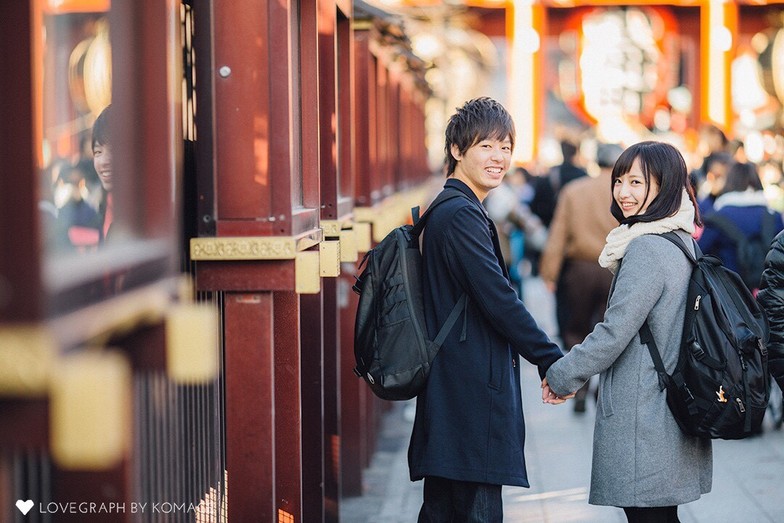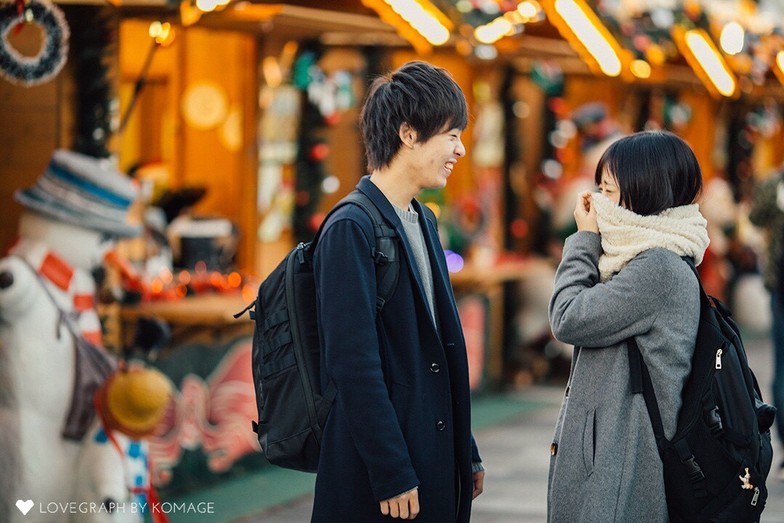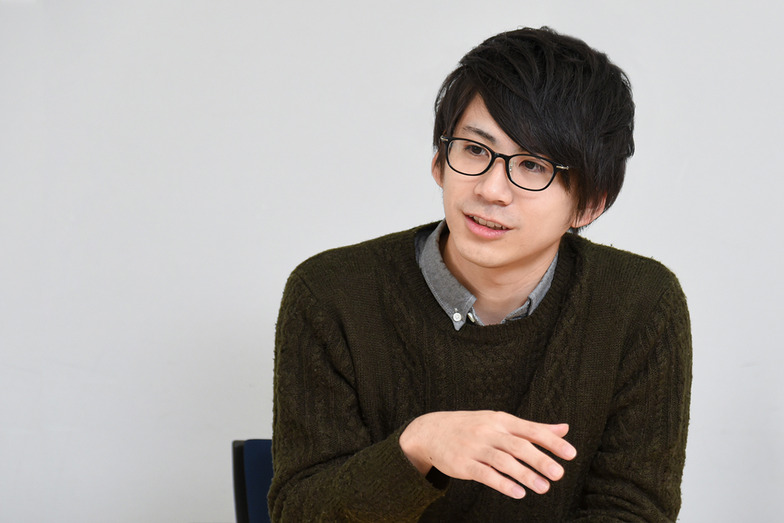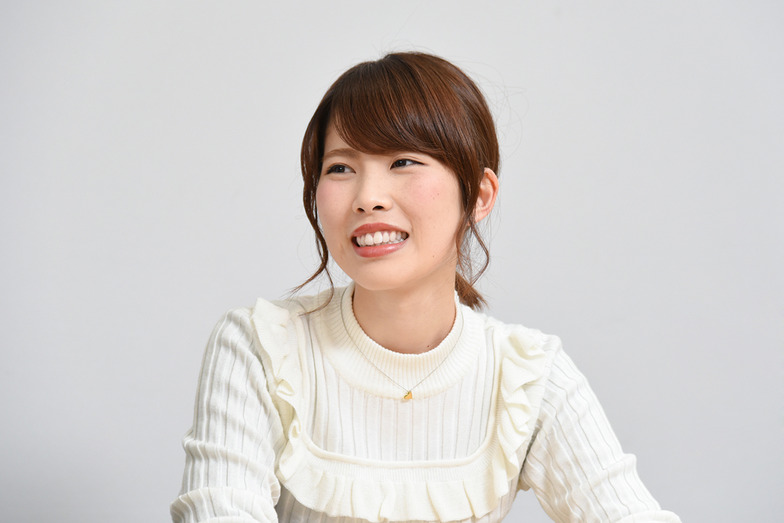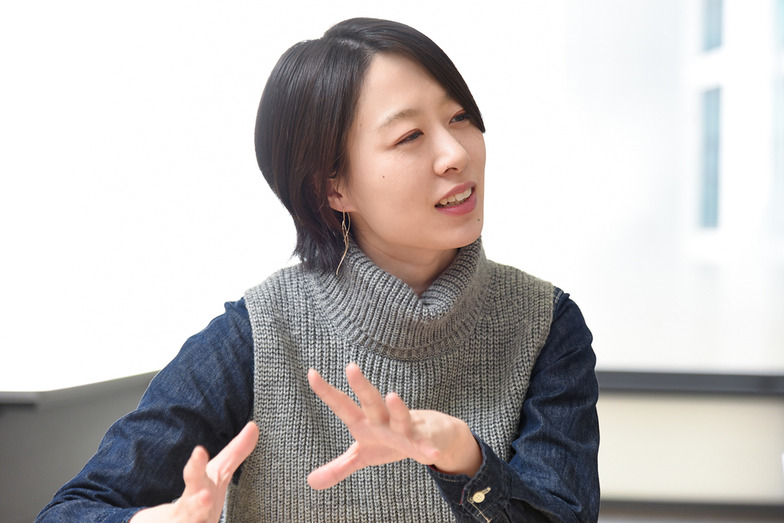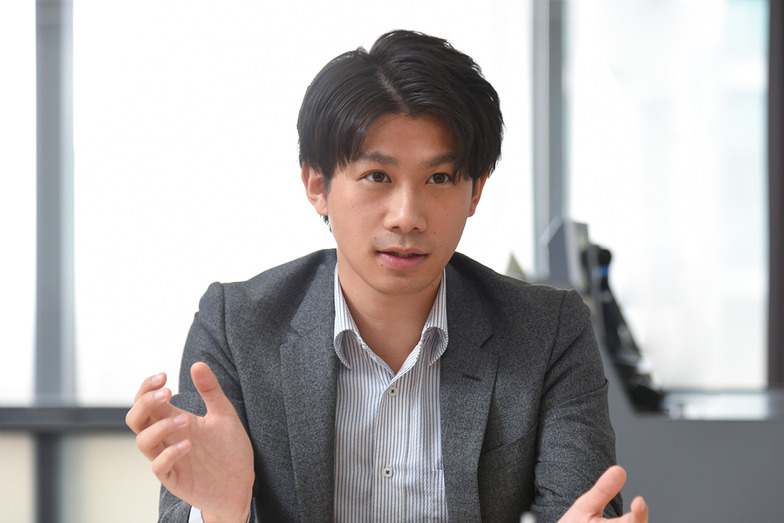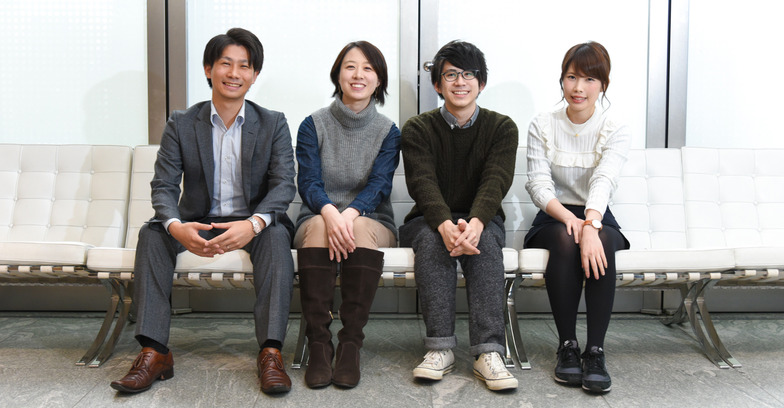
(From left) Minato, Nagi, Komashita, Murata
Photos taken of couples among friends spark demand from couples nationwide
Minato:In our previous article, Mr. Komashita commented, "For today's youth, 'being popular' matters more than 'being attractive,' so photos like LoveGraph's that resonate on social media are in demand." This time, we'd like to delve deeper into LoveGraph while exploring the relationship between young people's love lives and social media. First, could you tell us about LoveGraph's specific services?
Komashita: It's a service where a photographer accompanies couples or families to take their pictures. We receive requests from all over Japan for moments they want captured, like dating anniversaries, wedding anniversaries, dates, or trips. We launched the business in February 2015, so it's been about a year now.
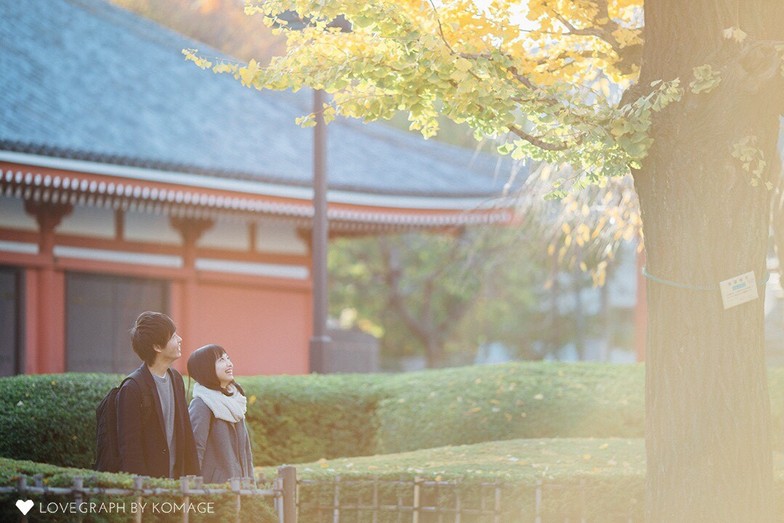
Minato: Do you have photographers nationwide? Like a crowdsourcing platform?
Komashita: We have about 150 photographers nationwide who can take photos, covering most areas. While crowdsourcing might suggest anyone can register, we don't accept just any photographer. We maintain a certain quality standard through portfolio reviews and interviews.
Minato: I see. What kind of people are using this service?
Komashita: Most are in their 20s, and many are active social media users. That's actually how the service gained traction—through social media.
Nagi: The name "LoveGraph" is simple and easy to understand, right? What led you to start it?
Komashita: I originally worked as a photographer for beauty pageants, but I realized I'd started taking photos not for others, but because I wanted to be praised myself. So, I decided to do something that would make people happier. Around Christmas, I saw couples out and about and thought, "If I photographed couples, they'd probably be happy." I asked a couple of my university friends to let me take their photos and posted them on Twitter. Then, I got tons of requests from all over the country saying, "We want you to photograph us too."
Minato: So you didn't start it as a business?
Komashita: Exactly. At first, I was doing it all by myself, traveling to places like Yamanashi and Fukui prefectures for shoots. As I kept sharing these couple photos, Murata built a website for me.
Minato: Had you two known each other before?
Murata: We originally worked at the same company during our student days; I was a web designer. Seeing Komashita share photos on Twitter, I thought he needed a place to store them and that the high demand meant it should be turned into a business, so I launched the website.
Minato: So it started with Komashita's idea, and as you worked on it, you saw the business potential and turned it into a venture. Then it spread through word of mouth on social media. Where did the name "LoveGraph" come from?
Komashita: I wanted to photograph not just couples, but families too, and eventually even elderly couples. That's why I went with "Love" in the name. Looking back now, it's a bit embarrassing (laughs).
Nagi: I see. Honestly, seeing stories and images of students using Love Graph, I had a strong impression it was exclusively for couples. But in terms of background and vision, you're aiming for a broader concept of "forms of love," right?
Providing experiential value like "a new kind of date" and "feeling like a celebrity"
Nagi: What I found interesting when looking at Love Graph photos is how they're refreshingly finished without being overly lovey-dovey (laugh). Do you direct the framing and posing to some extent?
Komashita: We do consciously aim for a friendly, close-knit overall tone. We also set boundaries, like "no kissing photos." It's important to take pictures that, even if they break up, make them think, "We had fun back then." We take care to capture moments that won't become embarrassing memories for either of them.
Nagi: That's interesting. I think a lot of people see couple photos posted on SNS and wonder, "What happens when they break up?" But as the operators, you draw a clear line. By the way, do you get repeat customers?
Komashita: Repeat customers usually request our services about once a year. Others use our services at milestones like marriage → pregnancy → childbirth.
Minato: Most users are couples who've been together for about a year, right?
Komashita: That's right. Since most typical dating experiences wrap up around the one-year mark, quite a few people want photos taken then.
Nagi: To break out of the rut?
Komashita: Exactly. In the past, leaving behind proper photos was mostly reserved for milestones like weddings or Shichi-Go-San. When I think about why our service has become so integrated into couples' daily lives, I believe it's because the photo shoot itself becomes the date. The shoot itself becomes a shared memory for the couple, and later, looking at the photos, they can reminisce, "That shoot was so much fun, wasn't it?" For that to happen, it's crucial that the photographer makes the day enjoyable. That's why we conduct interviews, not just portfolio reviews.
Minato: I see. So "LoveGraph" isn't just a photography service; it offers a new form of dating experience. That's what really resonated with young people.
Murata: Another key point is that the photos taken are posted on LoveGraph's Twitter account. With the rise of social media, everyone can experience a sense of being a mini-celebrity or famous person. I feel young people are seeking that kind of experience too.
Komashita: That's definitely a factor. When the subjects themselves share their photoshoot, even someone with around 200 followers can get 200 to 300 favorites. It might feel similar to being featured as a couple in a fashion magazine.
Nagi: Considering why Love Graph is popular in an era where smartphones can take reasonably high-quality photos, I think it's because it delivers a solid experiential value. It's not just about the excellent photo quality; it also caters to young people's needs by incorporating that media-like aspect of being shared on official accounts. In a way, it's a service competing with things like escape rooms, limo girls' parties, and love hotel girls' parties. I think it really matches the desires of today's youth. Did you plan for that from the start?
Komashita: Honestly, I never intended to turn it into a business at all. Even now, I wonder, "Why did this become a company?" I really hadn't thought that far ahead (laughs).
Minato: Next, let's dive deeper into the dating lives of young people navigating "popularity" and "appeal."
※Continued in Part 2
【Wakamon Profile】
Dentsu Inc. Youth Research Department (commonly known as Wakamon) is a planning team that engages with the real lives and mindsets of young people, primarily high school and university students. By understanding their "present," we seek hints to brighten and invigorate the near future. We foresee the future based on their insights and realize new businesses that foster better relationships between young people and society. Currently, 19 project members are based across our Tokyo headquarters, Kansai branch, and Chubu branch. We also share updates on the Wakamon Facebook page.











